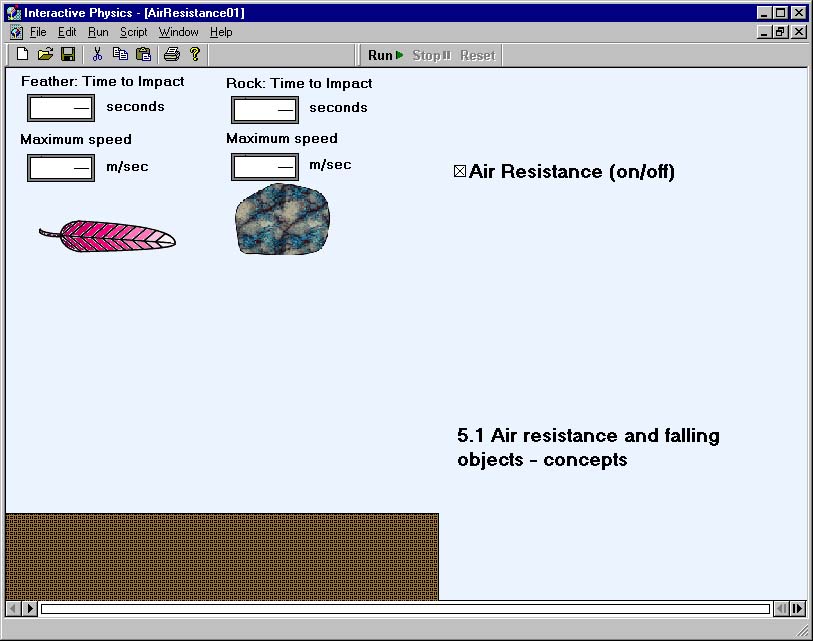When an object falls with air resistance, both its acceleration and speed change during its motion. When an object falls in a vacuum, there is no air resistance because there is no air in a vacuum.

- A rock and a feather are released from rest from the same height with air resistance
on.
Do they hit at the same time? Yes/No (answer shown in blue).
- A rock and a feather are released from rest from the same height with air resistance
off.
Do they hit at the same time? Yes/No (answer shown in blue).
- A rock and a feather are released from rest from the same height with air resistance
on. Determine the time and the speed that each object hits the ground.
Result:Object Time to impact Speed at impact Rock 2.5 seconds 7 m/sec Feather 25 seconds 0.6 m/sec
- Repeat the previous exercise with air resistance off.
Result:Object Time to impact Speed at impact Rock 1.6 seconds 15.7 m/sec Feather 1.6 seconds 15.7 m/sec
- A rock falls fastest when there is no air resistance
True/False (answer shown in blue).
- A feather falls fastest when there is no air resistance
True/False (answer shown in blue).
- Without air resistance, a rock and a feather fall at the same speed
True/False (answer shown in blue).
- With air resistance, a rock and a feather fall at the same speed
True/False (answer shown in blue).
Copyright © 2006-09 by Design Simulation Technologies, Inc.